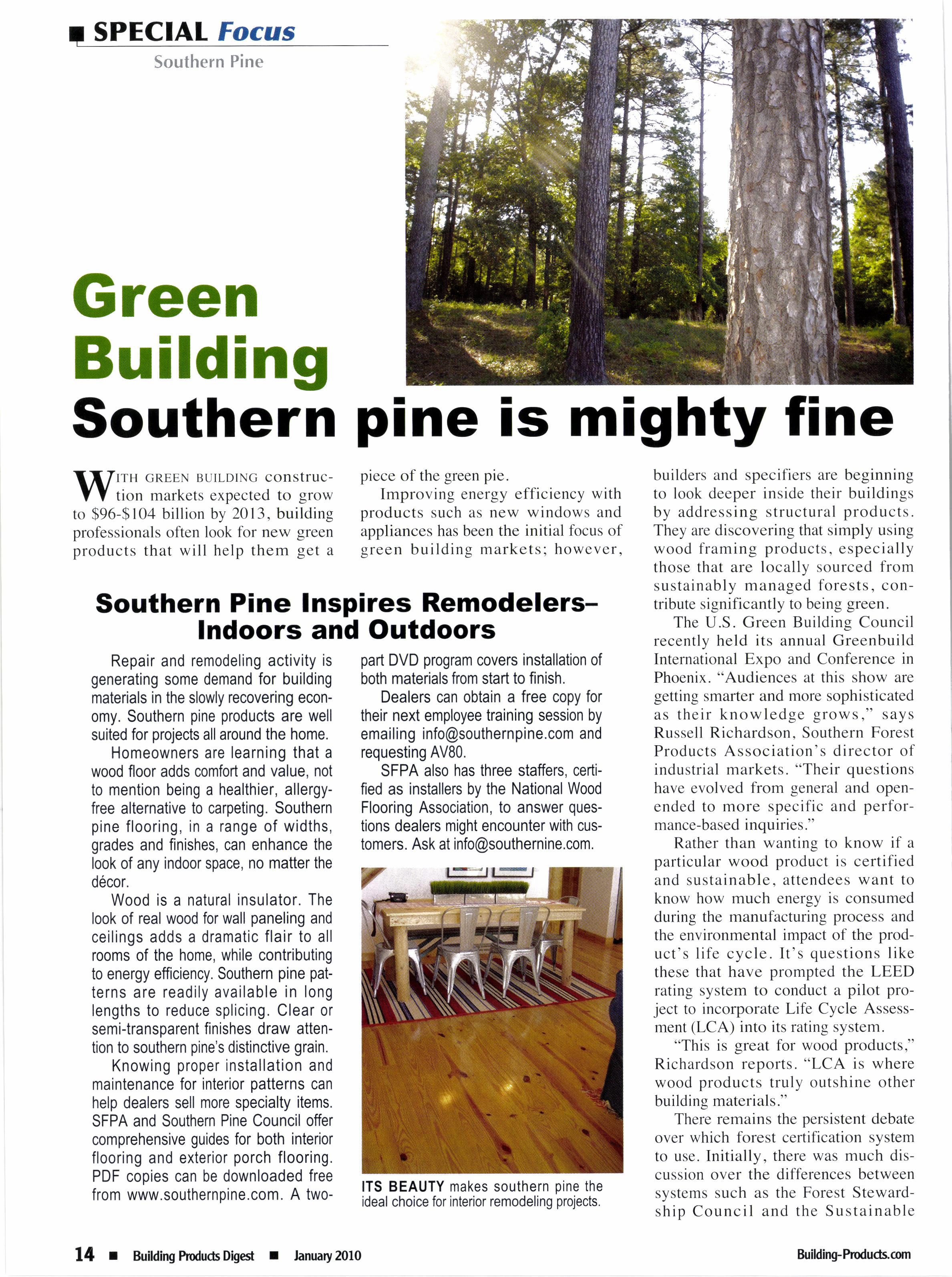
2 minute read
Green Building Southern pine is mighty fine
piece of the green pie. Improving energy efficiency with products such as new windows and appliances has been the initial focus of green building markets; however,
Southern Pine Inspires Remodelerslndoors and
Repair and remodeling activity is generating some demand for building materials in the slowly recovering economy. Southern pine products are well suited for projects allaround the home.
Homeowners are learning that a wood floor adds comfort and value, not to mention being a healthier, allergyfree alternative to carpeting. Southern pine flooring, in a range of widths, grades and finishes, can enhance the look of any indoor space, no matter the d6cor.
Wood is a natural insulator. The look of real wood for wall paneling and ceilings adds a dramatic flair to all rooms of the home, while contributing to energy efficiency. Southern pine pat terns are readily available in long lengths to reduce splicing. Clear or semi-transparent finishes draw attention to southern pine's distinctive grain.
Knowing proper installation and maintenance for interior patterns can help dealers sell more specialty items.
SFPA and Southern Pine Council offer comprehensive guides for both interior flooring and exterior porch flooring. PDF cooies can be downloaded free from www.southernoine.com. A two-
Outdoors
part DVD program covers installation of both materials from start to finish.
Dealers can obtain a free copy for their next employee training session by emailing info@southernpine.com and requesting AV80.
SFPA also has three staffers, certified as installers by the National Wood Flooring Association, to answer questions dealers might encounter with customers. Ask at info@southernine.com.
builders and specifiers are beginning to look deeper inside their buildings by addressing structural products. They are discovering that simply using wood framing products, especially those that are locally sourced from sustainably managed forests, contribute significantly to being green.
The U.S. Green Building Council recently held its annual Greenbuild International Expo and Conference in Phoenix. "Audiences at this show are getting smarter and more sophisticated as their knowledge grows," says Russell Richardson, Southern Forest Products Association's director of industrial markets. "Their questions have evolved from general and openended to more specific and performance-based inquiries."
Rather than wanting to know if a particular wood product is certified and sustainable, attendees want to know how much energy is consumed during the manufacturing process and the environmental impact of the product's life cycle. It's questions like these that have prompted the LEED rating system to conduct a pilot project to incorporate Life Cycle Assessment (LCA) into its rating system.
"This is great for wood products," Richardson reports. "LCA is where wood products truly outshine other building materials."
There remains the persistent debate over which forest certification system to use. Initially, there was much discussion over the differences between systems such as the Forest Stewardshio Council and the Sustainable
Forestry Initiative. As green building markets have evolved, alternative green building systems, such as Green Globes and ICC/NAHB 700, have come to the forefront, accepting all credible certification systems including, but not limited to, FSC and SFI. Even LEED is proposing to accept certification systems other than FSC.
The proposal is going through LEED's approval process.
It is clear that green building audiences are becoming smarter and more aware of products that appear to be "green" and those that really are green. Customers are learning to ask questions that relate to the on-theground environmental impacts prod- ucts have, such as those revealed by the LCA tool. Rather than a mere subject for debate, forest certification systems are increasingly being recognized and used as a way to display the environmental attributes of wood products. As green building markets mature, the positive environmental story of wood will shine even brighter.










